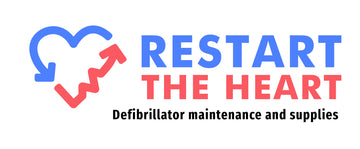Learning How to Save Lives with First Aid: What You Need to Know
Learning first aid can be a game changer for anyone. It gives you the skills to step in during emergencies and potentially save lives. Imagine a scenario where someone falls unconscious or gets injured. If you have the know-how, you can assess the situation and provide immediate help. This doesn't just mean calling for help; it might also involve doing CPR or stopping bleeding. When it comes to first aid, every second counts, and being prepared can make all the difference.
First aid isn't just for emergencies though. It’s a handy skill for everyday life too. From dealing with simple cuts to more serious issues like choking, having these skills helps create a safe environment for everyone. Whether you’re at home, work, or out with friends, knowing what to do when something goes wrong is invaluable. Let's explore some basic principles and techniques that will equip you for these tricky situations.
Basic Principles of First Aid
Understanding first aid starts with the basics, commonly known as the ABCs: Airway, Breathing, and Circulation. These are the first things you check to make sure a person is stable. Here’s how to remember these steps:
- Airway: Check if the person’s mouth or airway is clear. Sometimes, tilting the head gently can open the airway.
- Breathing: Look and listen for signs of breathing. If they’re not breathing, you might need to help with rescue breaths.
- Circulation: Ensure that blood is flowing properly. If there are issues, CPR might be necessary.
Emergencies often pop up when least expected, like when someone has a fall or suddenly takes ill. Being calm is crucial. Assess the scene first. Make sure it’s safe for you to help. Then, evaluate the person’s condition. Only after you’ve done these should you act.
Calmness is key. When you stay relaxed, it keeps the person you’re helping calmer too. Panic only adds to the chaos and can slow down the process. Take your time to evaluate the situation and then proceed with the most appropriate course of action.
In essence, first aid is about staying calm and methodical. When you react rather than rush, you tend to make better decisions. This approach can mean the difference between a manageable situation and one that spirals out of control. Let's keep these ABCs in mind and stay prepared for anything that might come our way.
Essential First Aid Techniques
Getting to grips with key first aid techniques can be incredibly empowering. CPR, or Cardiopulmonary Resuscitation, is one of the core skills that can be life-saving in emergencies where someone's heart stops beating. The steps are straightforward but require attention. Start by placing the heel of your hand at the centre of the person's chest, placing the other hand on top, and pushing down hard and fast. Aim for compressions at a steady pace until help arrives.
Using an AED (Automated External Defibrillator) might seem daunting, but these devices are designed to be user-friendly. They guide you through the process with voice prompts, helping deliver a shock to restore a regular heart rhythm. You'll usually find AEDs in public places, so knowing their locations is wise.
Addressing choking incidents is equally important. The Heimlich manoeuvre can effectively relieve choking in adults and children over one year old. To perform it, stand behind the person, wrap your arms around their waist, and give quick, upward abdominal thrusts.
First Aid Kit Essentials
A well-stocked first aid kit is a must-have in every home, car, and workplace. Having the right supplies and knowing how and when to use them is the essence of effective first aid. Here's a list to ensure you're always prepared:
- Bandages and adhesive tape
- Sterile gauze pads and dressings
- Antiseptic wipes and ointment
- Scissors and tweezers
- Pain relief medication
These basic items cover many common situations, like minor cuts, sprains, and discomfort. Knowing how to apply a bandage or clean a wound can prevent complications, fostering quicker healing.
Regularly checking your first aid kit ensures everything is up to date and ready for potential use. Refill items as needed and keep an eye on expiration dates to maintain effectiveness.
Getting Trained in First Aid
Taking part in formal first aid training can be both enlightening and empowering. It enhances your confidence to act decisively when faced with emergencies. Many organisations offer courses that cover a range of topics, from CPR to using defibrillators. These lessons not only teach techniques but also instil the calm needed to handle stressful situations.
Refresh your knowledge periodically. Just like any skill, first aid improves with practice and time. Staying updated ensures you’re prepared and confident when required to assist in emergencies. Courses can usually be found in local community centres or through specialized training providers.
Empowering Others to Save Lives
Encouraging those around you to learn first aid spreads the knowledge that can save lives. Family, friends, and coworkers should have the skills to support each other in times of need. Create a safety plan for your home and workplace. This fosters an environment where everyone feels responsible and secure.
Sharing resources and experiences is also beneficial. Talk about first aid practices and discuss scenarios in casual conversations. By empowering others, you’re not just equipping them with skills but also building a community that's ready to tackle health emergencies together.
Enhancing your first aid readiness is a crucial step in saving lives during emergencies. As you equip yourself with essential first aid knowledge, make sure you're also prepared with the right tools. Ensure your confidence in every situation by having access to high-quality AED batteries and pads. With Restart the Heart, you can trust that you'll always have what you need to spring into action and provide life-saving assistance when it matters most.

